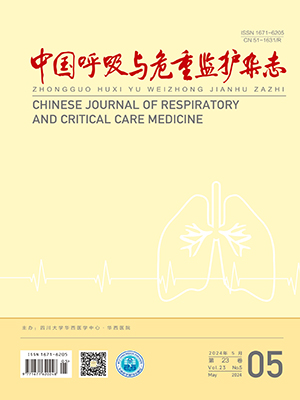Objective To study the application of virtual reality bronchoscopy stimulation in novice trainees. Methods Four novice bronchoscopists entered the training programby using a VR bronchoscopy in the clinical skill center. After the program, the dexterity, speed, and accuracy of all the four doctors were tested using the virtual simulation models. Results were compared to four skilled physicians as control group who had performed at least 50 bronchoscopies. Before-training and after-training test scores were compared using paired t tests. For comparisons between after-training novice and skilled physician scores, unpaired twosample t tests were used. Results All of the four trainees finished the training program. The novices significantly improved their dexterity, speed and accuracy. The percentage of observed segments increased from ( 74. 0 ±5. 1) % to ( 89. 3 ±4. 0) % . The number of contacts with the bronchial wall decreased from 87. 5 ±13. 2 to 30. 5 ±9. 3, and total time spent shortened from ( 700. 8 ±56. 6) s to ( 607. 0 ±17. 8) s. There were no statistically significant differences between novice accuracy ( the percentage of observed segments) after training and skilled physician accuracy [ ( 89. 3 ±4. 0) % vs ( 91. 3 ±3. 0) % , P = 0. 456] . Conclusion Practice using a virtual bronchoscopy simulator help novice trainees to attain a level of skill at performing diagnostic bronchoscopy, and it might play an important role in the training of chest physicians.
Citation: CHANG Chun,SHEN Ning,HUO Gang,ZHU Hong,HE Bei.. Virtual Reality Bronchoscopy Stimulation in the Training of Bronchoscopy. Chinese Journal of Respiratory and Critical Care Medicine, 2009, 09(5): 473-476. doi: Copy




